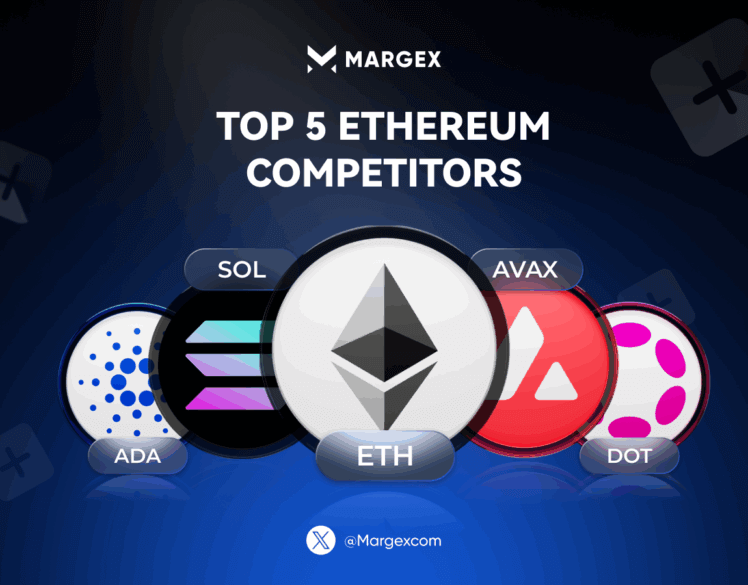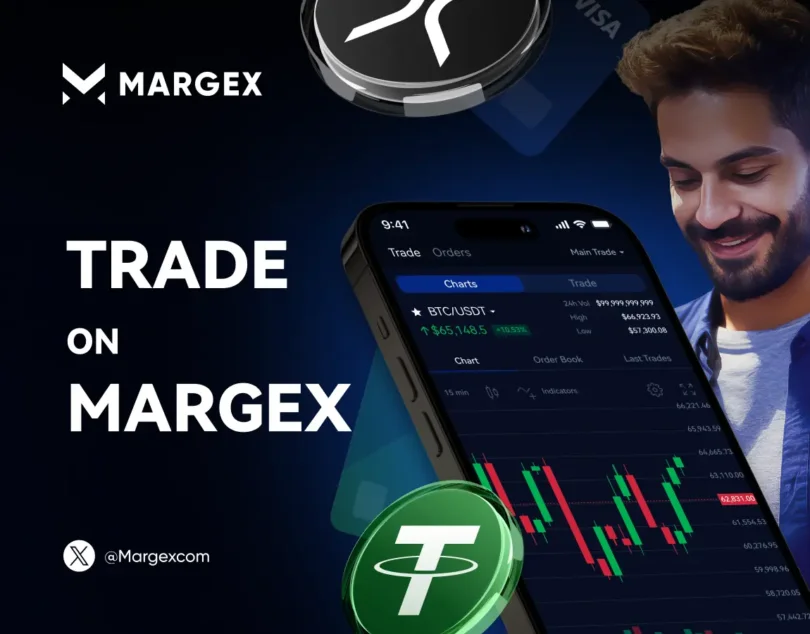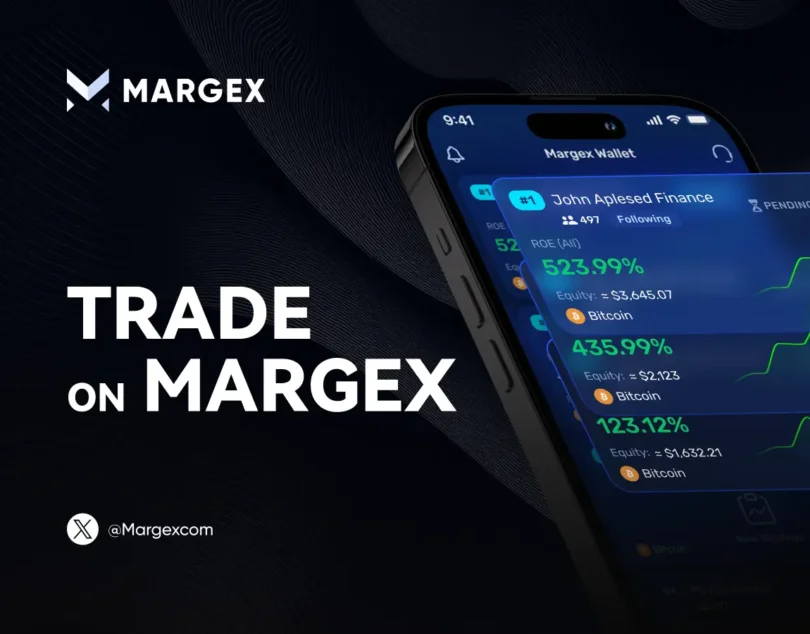Top 5 Ethereum Competitors to Watch in 2025

Let’s take a closer look at the top five Ethereum competitors that you need to watch in 2025, their consensus mechanisms, the main features they are utilizing, and why they are confidently portraying themselves as next-gen blockchain options. Here in the summary below are the main takeaways, and then we go through each project in depth, explaining smart contracts, multichain strategies, throughput, fees, tokenomics, and ecosystem developments.
Key Takeaways on Ethereum Competitors to Watch in 2025
- Proof of History consensus allows Solana to provide extremely high throughput (>50,000 TPS) from low gas fees to an emerging DeFi + NFT ecosystem.
- Cardano is built on a peer reviewed, Proof of Stake (PoS) approach focusing on formal verification of smart contracts and sustainability involving Hydra layer 2 as a scale layer.
- Avalanche finalizes in <2 seconds using a Snow consensus family that is unique, supports the EVM, and supports a thriving DeFi landscape of subnets (custom blockchains).
- Polkadot’s version of multi-blockchain architecture, relay chain, allows coexistence and interoperability of many blockchains as parachains, owing to the joint security and on-chain governance, bridging the blockchains.
- Binance Smart Chain (formerly Binance Chain) combines an ultra fast Proof of Staked Authority consensus coupled with EVM compatibility, a huge TVL and a very close alignment with the Binance ecosystem.
1. Solana: High-Speed PoH Pioneer
Exploiting Proof of History (PoH); a timestamping mechanism that orders events cryptographically before when they reach the PoS consensus, Solana was launched in 2020. While this “history as a clock” approach makes it possible for validators to process blocks under 400 ms, achieving theoretical throughput of over 50k TPS and average fees of about $0.00025 makes it a top Ethereum competitor for the high-frequency dApps and DeFi traders.
Proof of History (PoH) and Proof of Stake (PoS) are combined by Solana into a high-performance blockchain infrastructure. PoH sets up a verifiable passage of time that lowers communication overhead between nodes thus providing a significant gain in throughput. With this architecture, Solana can sustain over 50,000 TPS with sub second finality and, in real world events, up to 65,000 TPS.
On the other side, Solana supports smart contracts in languages Rust and C and compiles them to Berkeley Packet Filter (BPF) bytecode for optimized execution. With the leading protocols in Raydium, Serum, and Magic Eden all driving usability for its ecosystem, it is growing rapidly, especially in DeFi and NFTs. This April 2025, the total value locked (TVL) of Solana is about $3 billion, several times more than at the company’s initial public offering (IPO) in early 2021. This is because Solana is a combination of technical innovation and ecosystem growth which makes it one of the most scalable and vibrant platforms in the blockchain space.
2. Cardano: Formal-Methods PoS Vision
Ouroboros PoS is the provably secure protocol on which Cardano launched in 2017, and which has been live since 2020. It is particularly suited for mission-critical smart contracts with their emphasis on correctness and security.
Cardano’s consensus protocol is Ouroboros Praos, an adaptive Proof of Stake (PoS) one that randomizes slot leader selection to prevent grinding attacks. To make it even more possible to scale Cardano, Cardano uses Hydra which provides a layer 2 solution as “heads” sidechains.
If the network can tolerate these, then the processing power can go up to millions of transactions per second, without compromising the network’s overall security. Plutus smart contracts written in Haskell anchor the ecosystem separating on chain and off chain code for higher reliability and security. Clearly, Cardano’s DeFi and identity ecosystem is growing as decentralized exchanges such as Minswap & SundaeSwap are showing momentum.
Additionally, Atala PRISM offers innovative solutions for decentralized identity management. The native token, ADA, holds a market capitalization of approximately $45 billion, with a notable staking participation rate of around 75%. A combination of robust consensus, scalable infrastructure along with growing utility solidifies Cardano’s place as a major player in the blockchain space.
3. Avalanche: Snow-Powered EVM-Compatible Hub
In September 2020, Avalanche was launched, with the Snow consensus family (Snowflake → Snowball → Avalanche), an incentive structure based on DAG and proving carbon neutrality. It features X-Chain for issuing assets, C-Chain for, and P-Chain for maintaining consensus across all chains, therefore, it is fundamentally a multi chain network which supports multiple such blockchains.
Avalanche, which is a Snow family (Snowflake, Snowball, Avalanche), which is a DAG-based Proof of Stake protocol, was launched in September 2020, and also a protocol that enables sub-2 seconds finality, with carbon neutrality. The architecture is architected to have a multi-chain scaffold, including an X-chain for asset issuance, a C-chain for full EVM compatibility, and a P-chain for validator coordination. With this network, you can also create customized subnets (blockchains sealed with their own tokenomics and compliance features) in a highly flexible and scalable ecosystem.
Rapidity and security are guaranteed by Avalanche’s Snow consensus, which achieves both speed and security via quorum sampling. Pangolin and Trader Joe’s are major DeFi platforms hosted on the C-Chain for the growth of a growing ecosystem. As of now, Avalanche has about $7 billion in total value locked (TVL), which partly comes from its Avalanche Rush incentive program. AVAX is the token of its native chain and benefits from a deflationary design through a burn mechanism across all three chains to reinforce its value proposition in long term.
4. Polkadot: Interoperable Relay Chain
Polkadot, live since mid-2020, is a heterogeneous multi-chain framework connecting parachains (parallelized blockchains) via the Relay Chain for shared security and governance. DOT holders vote on governance referenda and can lease parachain slots, fostering a diverse ecosystem of specialized chains.
Polkadot operates on a Nominated Proof of Stake (NPoS) consensus mechanism, where stakeholders nominate trusted validators, enhancing both security and decentralization of stake distribution. Its governance is fully on-chain, allowing the community to participate in key decisions through referenda and treasury proposals, ensuring transparent and adaptable protocol upgrades.
At the heart of Polkadot’s architecture lies its parachain ecosystem, with major projects like Acala serving as a DeFi hub, Moonbeam enabling full EVM compatibility, Astar supporting a wide range of dApps, and Phala focusing on privacy-preserving smart contracts. The XCM protocol facilitates seamless cross-chain communication, allowing both asset and data transfers across Polkadot’s ecosystem and beyond. Further enhancing interoperability, bridges to major networks like Ethereum, Cosmos, and Bitcoin are under active development, positioning Polkadot as a foundational layer for a connected, multichain future.
5. BNB Chain: Binance’s EVM Powerhouse
Seeing BNB Chain (formally BSC, launched in 2020) proof of staked authority (PoSA) — PoS and PoA blended to complete blocks every 3 seconds and cost sub $0.01 gas. It is fully EVM compatible and takes advantage of Binance’s user base, liquidity, and CeFi DeFi synergy.
BNB Smart Chain adopts the Proof of Staked Authority (PoSA) consensus mechanism whereby a chosen set of 21 validators is elected based on staked BNB with fast block time, super low transaction fee, and stable performance. It has an order of magnitude throughput of about 100 transactions per second and 3-second finality which makes it well suited for high-frequency use cases, like DeFi, gaming, and NFTs. It has a thriving DeFi ecosystem with around $8 billion in total value locked riding on major protocols such as PancakeSwap, Venus, and Alpaca Finance among others. The BEP-20 token standard is similar enough to the ERC-20 used on Ethereum that developers and integrations are familiar with, supporting the use of BNB Smart Chain.
However, the strong linkage to the centralized exchange ecosystem of Binance’s Centralized exchange (DEX), including, Launchpad token offering, and CEX listings, made it easier for onboarding users into Binance on both retail and institutional sides.
2025 Outlook: How These Ethereum Competitors Stack Up
- Throughput & Fees: Solana leads in raw TPS; Avalanche & BNB Chain offer sub-$0.01 fees. Cardano awaits Hydra’s scaling. Polkadot focuses on cross-chain interoperability over raw speed.
- EVM-Compatibility: Avalanche C-Chain, Polkadot’s Moonbeam, and BNB Chain enable easy Ethereum alternative dApp migration.
- Consensus Innovation: PoH (Solana), Snow (Avalanche), Ouroboros (Cardano), NPoS (Polkadot),and PoSA (BNB Chain) all represent distinct approaches to throughput, security, and decentralization.
- Ecosystem & Tokenomics: All five have >$5 billion market caps, strong staking/incentive models, and active developer communities.

As the blockchain landscape matures, Ethereum competitors are no longer “Ethereum killers” but rather complementary “Ethereum alternatives,” each carving its niche with unique chains, consensus mechanisms, and ecosystems. Watching their progress through 2025 will reveal which environments will host the next generation of smart contract innovation and which will interoperate to build a truly multi-chain future.


